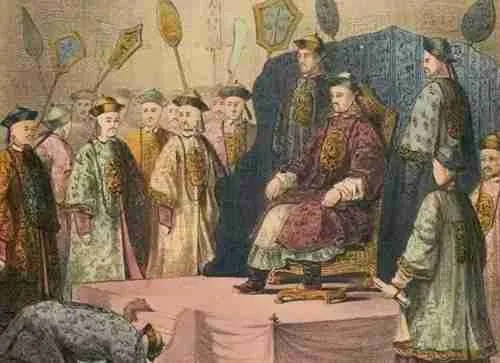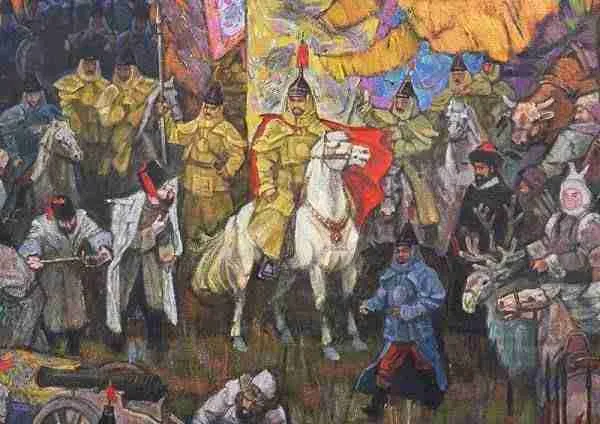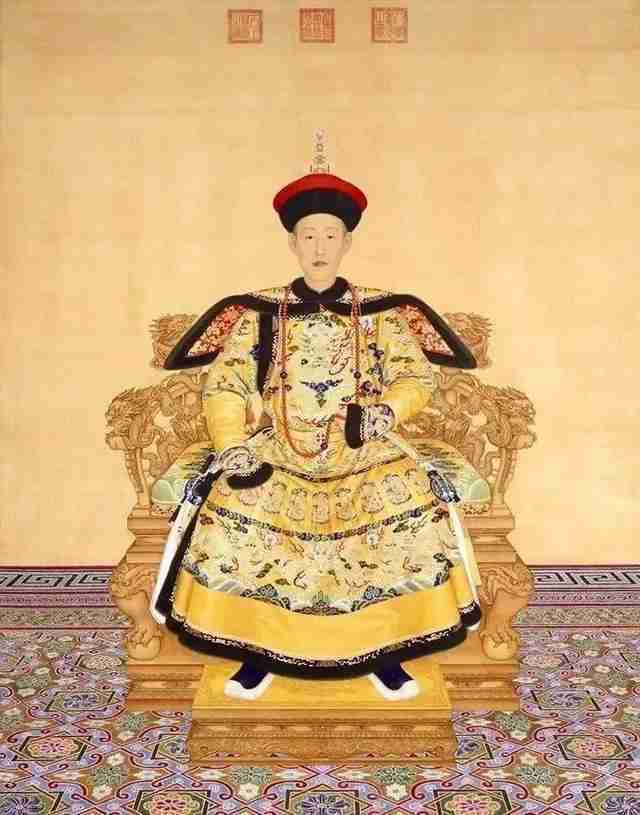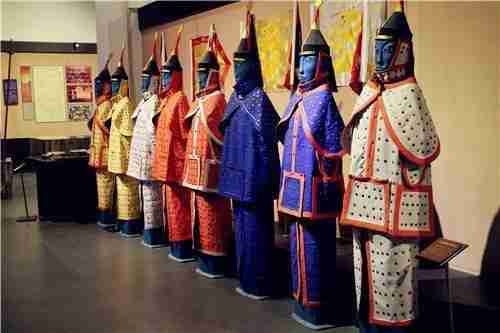One of the most popular dynasties in China has got to be the Qing Dynasty. It wasn’t just one of the largest and longest-serving dynasties but also the last imperial dynasty in China. Qing dynasty’s rule lasted from 1644 to 1912, and it is notably the only dynasty with a notable level of prosperity, especially in their tumultuous final years. The rule of the Qing dynasty is also known for being the second only time that the Chinese people were not ruled by the infamous Han People.
So, how did the Qing dynasty come to be, and how did they come to be the most successful of the Chinese dynasties?
Well, towards the end of the rule of the Ming Dynasty in the year 1616, the Manchurian forces of Northeastern Asia had braved and won against the Ming Army, consequently occupying a number of cities located along China’s northern border. But soon after, there was a full-scale invasion launched, and China was defeated later in 1644, bringing Emperor Shunzi to the helm of leadership. This was the birth of the Qing Dynasty. It’s also worth noting that with the new leadership at the helm, many of the Han subjects were discriminated against, with the Han men having their hair cut off in a Mongolian fashion, and if they couldn’t take this humiliation, they’d be executed. And though some of the Han intellectuals tried to criticize the punishment and the rule of the Qing Dynasty – the criticism was through different kinds of literature, many of these intellects from the Han dynasty would be rounded up then beheaded. As this went on, most of the remaining Han people were forced to relocate from the Qing dynasty’s power centers in Beijing.
Qing Dynasty Timeline of Important Events

Following their ascent to power in 1644, there are numerous changes that took place after they took their place in the society and became the new leaders. During their rule, the following important things took place:
1636 AD – The Beginning of the Qing Dynasty. In this year, the Huang Taiji of Manchuria from North-East China would rename the northern region Qing, which means pure in Chinese.
1644AD – The empire is created because of a call for help after Li Zicheng’s attack on Ming Dynasty’s capital. This attack saw Emperor Ssu Tsing kill himself while the rebels lied in the siege at an outpost on the Great Wall. The Prince Dorgon (from the Manchus) would help in the defeat of the rebels, placing Shunzhi, his nephew, on the throne and the subsequent creation of the Qing dynasty.
1722 AD – Emperor Kangxi was at the helm of leadership from 1654-1722. He reigned very smoothly.
1722-1735AD – The son, Yongzheng, Rules after the Kangxi’s death in 1722. The emperor encouraged reading and commissioned the printing of a 10,000-page encyclopedia.
1736AD – Qianlong, Yongzheng’s son, takes over the reins from 1736, taking the empire to the highest level in terms of wealth accumulated, thanks to foreign trade. Rice production increased at the time too, but in the later years, his reign weakens because of the flattery from one of the corrupt officials from the time.
1793 AD – Trade problems are eminent between 1793 and 1838 as China demands that their ceramics, silks, and tea are paid for in silver rather than have them exchanged for foreign goods. This worked until England and France were concerned with their silver supplies, and they came up with different trading schemes that made the Chinese addicted to Opium.
1839 – This marked the start of the Opium War that was from 1839 to 1842. The government banned British trade in 1839 when the commissioner was sent to Canton to burn the 20,000+ chests of opium. As a result, England declared war, and since Qing couldn’t win the war with the British battleships as the opponents and with newer guns, the Qing surrendered in 1842.
1842-1845 – End of War and Treaties thanks to the Treaty of Nanking. The dynasty was forced to add trading posts, even as they gave up on Hong Kong. A 2n Opium war is fought when the Qing refuse the terms of the treaty that called for the addition of extra things to the treaty, and as expected, China loses.
1850 – Taiping Rebellion. This rebellion lasted to 1864 from 1850 when Hong Xiuquan, along with his followers, wanted to make reforms to the many Chinese traditions. This rebellion was once again crushed, this time by the British and the French troops aiding Qings.
1861 – 1908 – Rule by Empress Dowager Cixi after the death of Emperor Xianfeng in 1861. During her rule, she fires an entire Grand Council, then crushes all reform attempts in 1898.
1894 – 1895 – With China and Japan both interested in ruling over Korea, they start fighting, and the Japanese defeat China because of their modern fighting techniques. This forced the Qing to make improvements in how they defend themselves.
1900 – The Boxer Rebellion is formed to fight and kick foreigners out of China. This fight is led by a group of rebels that forms the Society of the Harmonious Fists/ Boxers. In this fight, several foreign missions are burned down, and the Christians (Chinese) are killed.
The Europeans fight back against the Boxer rebellion, and they prevail, given the power of their troops. Empress Dowager Cixi is forced to flee to Xian.
1908 – 1911 – In a move to unify the whole of China as a democracy, Sun Yat-Sen organizes a secret revolutionary group, but they don’t win. And in 1911, the existing government is overthrown, as Sun gets elected as the provisional president of the newly established Republic of China.
1912 – The last emperor, Yuan Shikai, takes the leadership role as Sun Yat-Sen steps down. Later, Puyi, the last emperor is abdicated in 1912, after long negotiation – Puyi is six years old at the time.
When Did The Qing Dynasty Start And End?

The Qing dynasty started in 1644 under the leadership of Emperor Kangxi and ended in 1912 with Emperor Puyi (6 years old) as the leader.
Why Did The Qing Dynasty Come To An End?
The fall of the Qing dynasty took place in 1911 after the dynasty was overthrown by the revolution that had been brewing for change from 1894, following the formation of the Revive China Society that was formed by the Western-educated revolutionary Sun Zhongshan. The society was formed in Hawaii before it moved to Hong Kong.
The biggest move was made in 1905 when Sun united a number of the revolutionary factions, forming one party, thanks to the help he got from the Japanese. With the help he received, he also came up with a manifesto called the Three Principles of the People.
Then in 1911, there was the Nationalist Party of China led an uprising in Wuchang; with the help of the Qing soldiers and with 15 provinces in tow, a declaration for independence from the empire was made. And within weeks, Qing’s court agreed with the new revolution, and this led to the creation of a standalone Republic led by a general, Yuan Shikai, who was the president of the republic. Then in 1912, Xuangtog was abdicated, and Sun came up with a provisional constitution used by the newly established republic. These changes ushered in many years of political unrest all around Yuan.
Although there was a brief attempt at reinstating the defeated Qing government in 1917, the military coup failed, and Xuantog was restored as the president in under two weeks.
Qing Dynasty Emperors List
Emperor Kangxi

Kangxi was the dynasty’s first emperor, and he ruled the nation for 61 years, from 1654 to 1722, which is the longest period ever ruled by any of the Chinese emperors that ever existed.
During his reign, Emperor Kangxi oversaw the creation or changes that represent some of the biggest cultural leaps recorded in Chinese culture. These leaps include the creation of the dictionary that is, to date, regarded as the best possible standardization of the Han language. He also oversaw the funding of surveys and the subsequent creation of the most extensive maps of China that existed at the time.
Kangxi is also the emperor that saw the introduction of the reduced taxes while also stifling corruption and all the excesses of government that existed at the time. Emperor Kangxi further enacted policies that were very favorable to the farmers and also effected policies that brought land seizures to an end. To ensure that these changes were implemented, the emperor trimmed not only his own expenditures but also his own staff.
The other notable thing done under Emperor Kangxi is that he was able to squash different military threats while also pushing back on the three big Han rebellions against the Qing Dynasty and seizing Taiwan. On the same breathe, Kangxi stopped the continuous invasion attempts by the Tsarist Russia group, and he also brokered lasting treaties such as the Treaty of Nerchinsk of 1689 that brought into Chinese control a vast area of Siberia – this was a move that allowed him to stifle the rebellions in Mongolia.
Kangxi’s rule also saw the introduction of corn and potatoes to China. These crops were native to the Americas, and this introduction is the reason why food was plentiful at the time. Kangxi would also oversee the explosion of exports of tea, silk, cotton, and ceramics to other countries.
Emperor Qianlong

Qianlong was the next emperor after Kangxi, ascending to the throne later in 1735 and ruling China for 60 years. Qianlong was not the most dynamic ruler, and his rule would later be largely characterized by his rather looming disinterest in ruling the nation. He was rather preoccupied with more personal and artistic pursuits, publishing 42,000 poems in the process. He also added poetry (by hand) to the hundreds of historical art pieces that were in his palace. Even so, he was not that talented.
He was obsessed with one thing, though – the preservation of the Manchu culture and the enactment of the dictionary and the genealogy projects. Emperor Qianlong also held on to the belief that the sorcerers targeted the Manchurians, and therefore came up with a system to combat this, and at the same time, he created a program through which any of the existing books with even the slightest possible disparagement of the Manchurians got destroyed.
The other emperors include:
- Huangtaiji
- Shunzhi
- Yongzheng
- Jiaqing
- Daoguang
- Xianfeng
- Tongzhi
- Guangxu
- Xuantong (Puyi)
Qing Dynasty Achievements And Inventions
- Six ministries were formed by the new government, each governing a specific area of business, and these agencies led to more successful leadership.
- Expanded foreign trade with an increase in the flow of silver into China before they went to war with the British troops.
- Education was encouraged, and the encyclopedia and dictionary formed
- Cultural achievements include an increased focus on arts and decorative crafts and new techniques. They also had a great architecture that survives to date. Artists were given immense support to improve their craft.
- Music was also encouraged; specifically, the Jingxi or the Peking Opera
How Did China Change During The Qing Dynasty?
- Well, the Chinese empire expanded significantly under the Chinese empire, with the population ballooning from 150 million to about $150 million.
- There also was the Sinicization of the non-Chinese that existed in the empire.
- A national economy was set up.
Eight Banners

The 8 banners were the primary military and administrative divisions under the Qing dynasty and Later Jin before. These are the divisions that the Manchu households were placed in, and during warring times, the 8 banners worked as armies. But that is not all – the banner system was also the most basic organizational framework for the Manchu in society.
The banners were a creation of the Nurhaci from the 17th century, and they played a huge role in the unification of the previously fragmented Jurchen people (renamed Manchu) during the Qing dynasty’s conquest of the Ming dynasty. The Han and Mongol forces were also incorporated into the banners.
So, if you are interested in learning more about the conservative Qing dynasty, we hope that this article has shed sufficient light on the Chinese dynasty that had the eight banners, encouraged arts, fought opium wars, was part of the Taiping rebellion, and the Boxer rebellions, giving rise to the Republic of China.